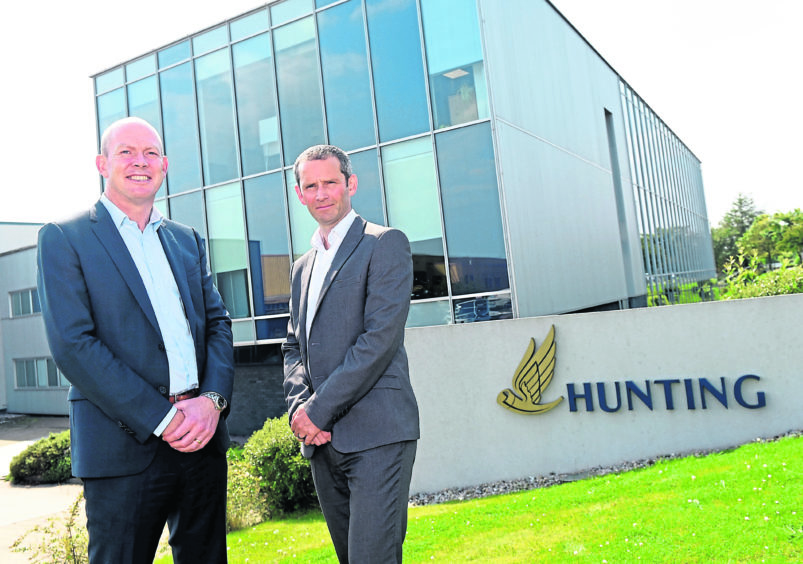
Oilfield service firm Hunting said today it had clinched its first sizeable order for a pioneering technology that uses microbes to increase hydrocarbon production.
Hunting said the order had been placed by an unspecified client in the Middle East and included a 30-well treatment programme. The contract value wasn’t disclosed.
Organic Oil Recovery (OOR), developed alongside California-based Titan Oil Recovery, was piloted on CNOOC’s Scott platform in the UK North Sea last year.
It helped licence partners record the biggest measured oil output from the tested well on Scott in more than five years, delivering an additional 25,000 barrels.
OOR is the first technology to come through Hunting’s Tek-Hub in Badentoy, near Aberdeen.
Specially prepared nutrient packages are injected into the reservoir where they feed indigenous microbes, which can multiply exponentially.
The microbes spreads throughout the formation, helping to break up and mobilise previously trapped oil droplets, which are then produced.
Hunting announced the Middle East contract win in a trading update ahead of its half-year results being issued in August.
The company said its projected 2021 Ebitda would be “below previous expectations” but ahead of the 2020 full-year result of $26.1m.
So far this year, the London-headquartered firm’s onshore businesses have traded ahead of expectations.
But this was more than offset by a lower performance from its offshore and international businesses.
Hunting’s EMEA segment reported a subdued trading environment throughout H1 2021, as activity remains “slow” in the North Sea.
The firm also cited the ongoing impact of Covid-19 and OPEC production constraints.
Chief executive Jim Johnson said pricing in the oilfield service sector was “deflationary” in the first half across all product lines, “as too many goods and services pursued an industry hampered by persistently low rig counts”.
Mr Johnson said: “With the oil price firmly above $70 per barrel, along with the production discipline seen within the OPEC group and the improving global economic outlook, management expect a gradual improvement in hydrocarbon demand in the short to medium term.
“In the period, the group has moved from a negative EBITDA result in Q1 2021 to a positive EBITDA result in Q2 2021, driven by an improving market in the US onshore.
“While there has been an increasing onshore rig count across North America, operators continue to demonstrate strong capital discipline which has led to drilling expenditures remaining subdued throughout H1 2021.
“Given the stronger oil price environment, we believe that as client cash flows improve capital expenditures will also increase, leading to robust demand for the Group’s products and services supported by a significantly improved outlook for the industry for 2022 and beyond.”
At the end of June 2021, the group’s headcount was about 1,900, compared to almost 3,000 at year-end 2019.
Recommended for you

